Starting a YouTube channel as a small business owner can feel exciting at first, but keeping up with content takes more time than most of us expect. I learned this the hard way when I tried doing everything myself, from writing scripts to editing videos late at night. That is why I decided to test different affordable YouTube automation tools for small businesses and see which ones could actually save time without lowering quality.
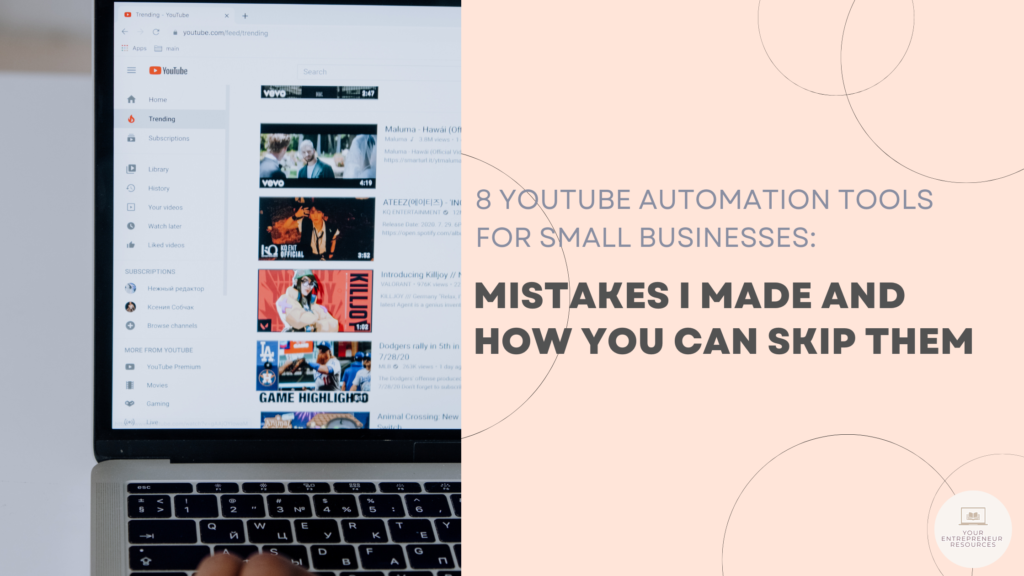
What I found is that the right tools make a big difference. They help with creating videos, scheduling uploads, and even making sure your content gets discovered by the right audience. In this article, I’ll share my experience using these platforms so you can figure out which ones are worth trying for your own channel.
Table of Contents
Pictory: Best for Quick Faceless Videos
Pictory stood out as a tool that actually makes content production easier. I pasted a blog link into the platform and watched it create a video with captions and narration in just a few minutes. What impressed me most was the captioning feature, which was accurate and ready without extra editing. This was helpful for making content that could reach a wider audience.
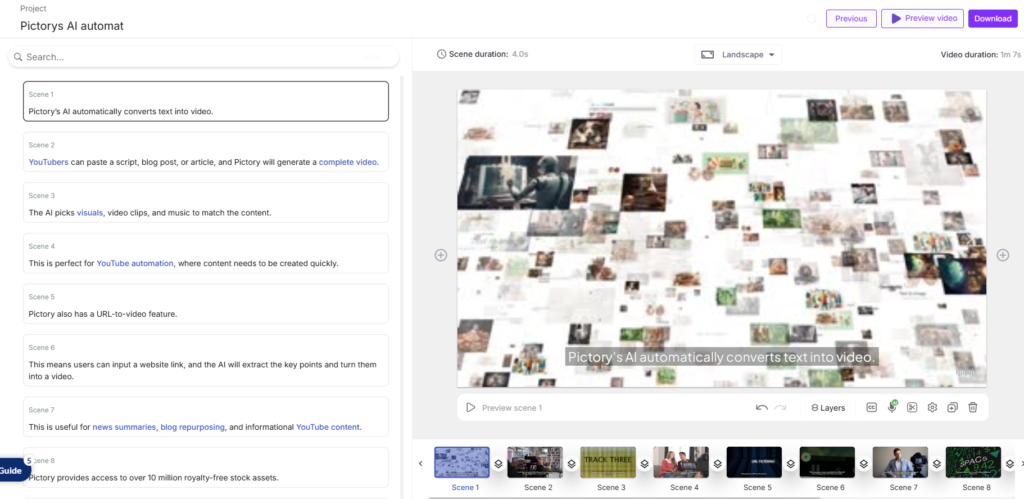
The voiceover options also made the process smoother since I did not need to record anything. For small businesses that want faceless videos or quick educational content, Pictory really cuts down on production time. It also has enough customization to add branding elements like logos and colors. If I had to choose one tool for fast, ready-to-publish videos, this would be it.
Hootsuite: Solid for Scheduling, But Pricey
When I moved on to Hootsuite, I found that it focused less on creating videos and more on scheduling them. I used it to line up a batch of videos for release over a month, and it was helpful to see everything organized in a calendar view. This made sticking to a consistent posting schedule much easier, which matters when trying to grow a channel.
The analytics were also useful because I could see how each video was performing without logging into YouTube directly. The biggest downside was the price, which felt high for a small business budget. Hootsuite is powerful if you run several channels or social accounts, but if you just need scheduling, there might be cheaper tools.
Placeit: Perfect for Branding
Placeit was helpful for creating the visuals that make a channel look polished. I tried their intro and thumbnail templates and was able to design something professional without opening complicated software. It felt like a shortcut to branding since I did not need advanced design skills to make my channel look consistent.

I also tested the logo maker, which generated options quickly after I entered my channel name. While it is not the most advanced design platform, it gave me clean and usable graphics. For small businesses that want to stand out visually without hiring designers, Placeit is an easy win.
TubeBuddy: Essential for Testing
TubeBuddy made a big difference once I started optimizing older videos. The A/B testing feature let me try different titles and thumbnails, and I saw measurable improvements in click-through rates. Even small changes had an impact, which showed me how important this tool can be for growth.

The bulk editing tools were also practical when I needed to update multiple videos at once. TubeBuddy integrates directly with YouTube, so I did not have to switch platforms to manage my channel. For small business owners who want to work smarter instead of harder, this is a strong option.
Social Blade: Good for Tracking Progress
Social Blade is not a creation tool, but it gave me valuable insight into my channel’s progress. I tracked subscribers and views over time and compared my numbers with similar channels. This made it easier to see where I stood and how realistic my growth goals were.
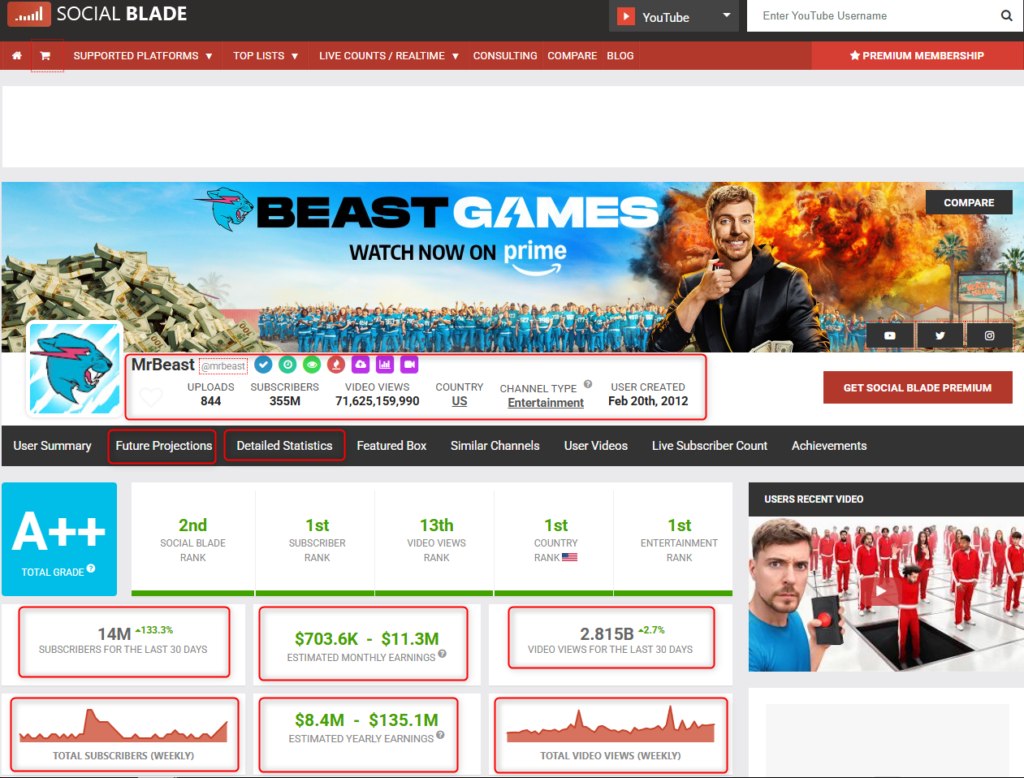
The future projections were motivating because I could see where my channel might be in six months. While it does not provide as much detail as YouTube’s own analytics, it is helpful for quick snapshots. If you like tracking your numbers and setting clear targets, Social Blade is a solid free resource.
Lumen5: Great for Repurposing Blogs
Lumen5 was the first platform I tested because I already had plenty of blog posts that were not being used anywhere else. I copied one of my longer articles into the platform, and within a few minutes, it turned it into a video draft with clips, music, and a basic storyboard. I was surprised at how quickly the content came together, even though some of the visuals needed adjustments.
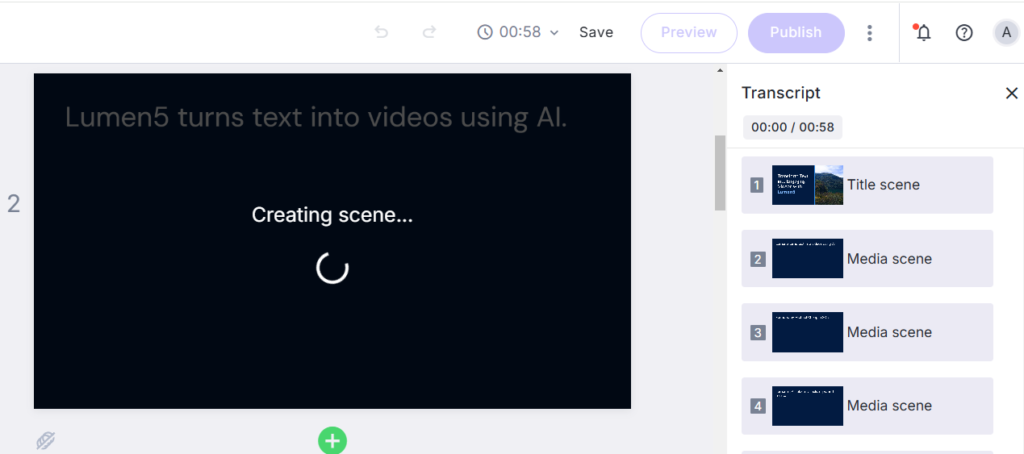
The editing interface felt simple, which made customizing the video easy. I liked the built-in stock library because I did not need to shoot extra footage. For a small business that wants to recycle written content into YouTube videos or short ads, Lumen5 makes sense. The free version works fine for testing, but the paid plans are better if you want higher quality exports.
ChatGPT: Best for Planning Scripts
ChatGPT was the tool I used whenever I felt stuck on what to say. I asked it for script outlines, hooks, and even full drafts based on topics I wanted to cover. The time I saved on writing alone made it a strong part of my process.
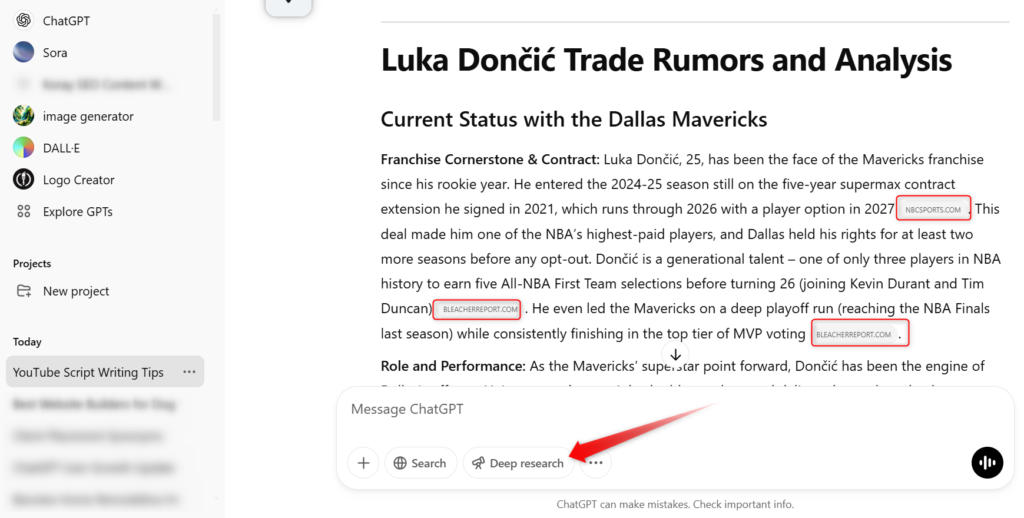
It also helped me come up with keyword-rich descriptions and video titles. While I always reviewed and edited the output, having a starting point gave me confidence to publish faster. For small business owners who do not have much time for planning, ChatGPT acts like a reliable assistant.
VidIQ: My Go-To for Growth
VidIQ quickly became one of the most valuable tools in my test. It does not create videos, but it helps get them seen. I used it to find keywords with strong search demand and low competition, and I noticed my videos started showing up in more searches after making adjustments. That kind of visibility is hard to achieve without guidance.
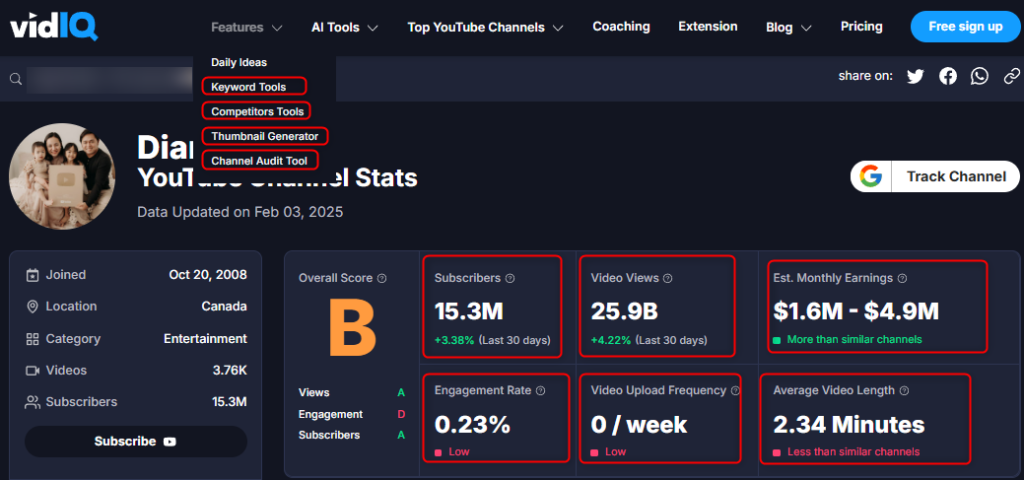
The platform also gave me ideas for future content by tracking trends. I appreciated being able to monitor what competitors were doing, which helped me spot opportunities for my own channel. If your main goal is growth and better reach, VidIQ delivers clear results that make it worth keeping in your toolkit.
Affordable YouTube Automation Tools For Small Businesses On Reddit
One Redditor shared that Conpagely has been a helpful AI tool for simplifying marketing tasks. They noted that while the cost depends on the plan, it’s still reasonably priced and worth trying. For small businesses exploring YouTube automation tools, this shows the importance of finding software that’s both effective and budget-friendly. The right pick can help streamline workflows and keep content consistent without overspending.

Another redditor states that Tagshop AI is a handy option for creating UGC-style video ads in just a few minutes. You can drop in a product link or upload an image, and the tool quickly puts everything together. For small businesses, tools like this can make YouTube automation much easier. Instead of spending hours on production, you can create quick, polished videos and keep your channel active without stretching your budget or time.

Another user shares that small businesses don’t need to jump into pricey AI tools right away, since free or lower-cost versions are usually enough to test features and see results. This advice applies directly to YouTube automation tools, where free trials and basic plans can already help with scheduling, captions, and analytics. The smart move is to start small, measure what works, and only upgrade when a tool proves it can grow your channel. That way, you avoid wasting money on features you don’t actually need.

How Do You Choose the Right YouTube Automation Tools for Small Businesses?
You choose the right YouTube automation tools for small businesses by focusing on these five factors:
- Ease of use: Look for tools with simple dashboards and drag-and-drop features that do not require advanced skills.
- Core features: Match the tool’s main strengths to your goals, whether it’s video creation, scheduling, or optimization.
- Pricing: Pick a plan that fits your budget while still offering the features you will actually use.
- Scalability: Choose tools that can grow with your channel, so you don’t need to switch platforms later.
- Customer support: Make sure help is available when you need it, especially if you’re not tech-savvy.
I used these points to guide my own choices, and it saved me time and money. Some platforms had flashy features that weren’t practical, while others offered just enough without overwhelming me. By weighing each of these factors, I found tools that fit my current needs while also supporting long-term growth. You can do the same and avoid investing in software that does not deliver results for your business.
Can YouTube Automation Tools for Small Businesses Improve Channel Growth?
Yes, YouTube automation tools for small businesses can improve channel growth because they help you stay consistent, optimize content, and reach more viewers. According to YouTube’s Creator Insider team, channels that upload weekly see up to 40% faster subscriber growth compared to those that post less often.
Automation tools make this level of consistency possible by handling tasks like scheduling uploads, generating SEO-friendly titles, or creating quick videos from text. For a small business that doesn’t have a full media team, this support can make the difference between slow growth and steady momentum.
Are YouTube Automation Tools for Small Businesses Worth the Investment?
Yes, YouTube automation tools for small businesses are worth the investment because they save time, reduce workload, and help channels grow faster. A HubSpot survey found that 54 percent of marketers say video is the most valuable type of content for ROI, but producing it consistently is often the biggest challenge. Automation tools fill that gap by making video creation, scheduling, and optimization more manageable for business owners who do not have a full marketing team.
Tools like Pictory and VidIQ gave me a way to publish more videos while keeping them optimized for search, which directly improved engagement and visibility. Instead of spending hours figuring out editing or keyword research on my own, I used that time to focus on serving customers and running the business. For small businesses, that balance makes automation tools not just helpful but genuinely worth the spend.
How Much Should Small Businesses Budget for YouTube Automation Tools?
Small businesses should budget between $25 and $100 per month for YouTube automation tools, depending on their needs. Entry-level platforms like Pictory or TubeBuddy start at around $25 per month, which is enough for basic video creation and SEO optimization.
More advanced tools such as Hootsuite can cost $100 or more each month, especially if you’re managing multiple accounts and need detailed analytics. For most small businesses, starting with one or two affordable tools makes the most sense and still delivers strong results.
When I tested these platforms, I noticed that higher price tags did not always equal better value. Some of the lower-cost tools offered exactly what I needed without extras I would never use. A practical approach is to begin with a smaller monthly budget, track how much time and growth the tool actually saves, and then scale up if it’s worth the investment. By budgeting this way, you avoid overspending and keep resources free for other parts of your business.
When Is the Right Time to Start Using YouTube Automation Tools for Small Businesses?
Marketers should start using YouTube automation tools for small businesses when consistency becomes difficult or growth slows down. If you’re struggling to post videos on a regular schedule, spending too much time on editing, or finding it hard to get your videos noticed, that’s the point where automation tools make sense. Data from Wyzowl’s 2024 Video Marketing Report shows that 91 percent of businesses use video as a marketing tool, so waiting too long can leave you behind competitors who are already producing content faster and more efficiently.
In my own case, I knew it was time to invest once my uploads became irregular and I started losing momentum with viewers. Tools like Hootsuite helped me stick to a schedule, while VidIQ and TubeBuddy gave my videos the visibility they needed to compete in search results. If you see that your YouTube strategy is eating into time meant for other parts of the business, automation tools can step in and keep your channel active while you focus on growth.
Wrapping Up: Choosing the Right YouTube Automation Tools for Small Businesses
Choosing the right YouTube automation tools for small businesses comes down to finding what saves time and brings real results. Not every platform will be the right fit, and that is why testing them based on your own needs is important. Some tools focus on content creation, while others are built for scheduling, branding, or optimization. By starting with one or two, you avoid overwhelm and see which ones actually improve your channel’s performance.
If you are trying to grow your channel while running a business, start with one or two of these tools. Once you see what works best for your workflow, you can add more as your channel grows. The right mix will save you time and help your business stand out on YouTube. Check out our other reviews that will help you grow your knowledge in building a thriving business online.





0 Comments